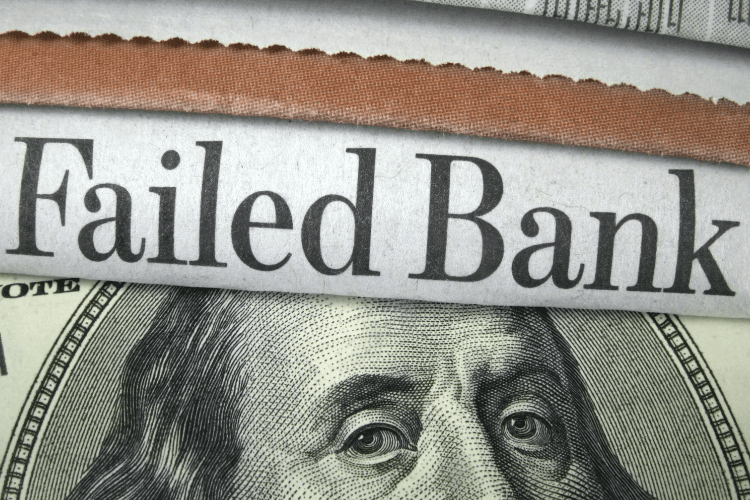Two Of The Biggest Bank Failures In US History Just Happened This Month. Should You Be Concerned?

It wasn’t long ago that the Lehman Brothers went bankrupt, and the 2008 recession was in full swing.
Fast-forward to this month, two of the country’s major banks have declared bankruptcy. It’s eerily similar to what happened back in ‘08.
So, are we on track for another deep recession? Will these bank failures create more significant problems for us down the line?
Let’s learn more about what happened and how it’ll affect the economy.
The Bank Failures: Here’s What Happened
Silicon Valley Bank (SVB) was a backbone for many venture capitalists and tech firms who used the bank’s investment capital to fund startups and other businesses. But with rising interest rates and a changing economy, SVB found it harder to source the money it needed to stay afloat.
These problems came to a head on March 10, when FDIC regulators shut the bank’s doors for good. This event is the second-largest bank failure in US history.
SVB’s closure caused the bank’s parent company to lose over 60% in share value until sales were halted.
Millions of customers were also desperately trying to get their money back. However, since many of SVB’s customers held balances over the FDIC’s limit, it’s unclear whether they’ll receive everything.
Why Do Bank Failures Happen?
A bank is responsible for ensuring they have enough assets to meet the needs of its clients. But when the bank runs out of money, they become insolvent and can’t meet their financial responsibilities.
Most of these bank collapses correlate with taking on risky investments, bad loans, fraud, or other financial shocks that are out of the institution’s control.
In SVB’s case, the investment boom during the pandemic caused SVB to have a lot of extra liquidity. They invested $120 billion in long-term bonds and securities to increase their returns, hoping the financial system would remain stable.
But as the post-covid economy kicked in, SVB could not keep up with rising interest rates, causing it to fail.
Should You Be Worried About This?
Despite financial experts claiming the financial system’s safe, SVB’s closure still impacted other banks nationwide.
A few days after the SVB fiasco, Signature Bank followed in its footsteps. It closed its doors, creating the third-biggest bank failure in US history.
Mid-sized banks like First Republic Bank have also been feeling the ripple effects of the incidents and struggling to stay solvent.
The federal government is quickly stepping in to stop further damage from spreading. Increased FDIC regulation will also ensure members can continue their transactions without issues.
And unlike in 2008, taxpayers will not be responsible for the banks’ losses.
Are Banks Still Safe?
When seeing two of the biggest bank failures in US history happen in less than a week, many people are scared this is only the beginning.
But as President Biden stated in a recent remark, “Americans can rest assured that our banking system is safe. Your deposits are safe.”
The FDIC secures up to $250,000; you can file a claim if your account exceeds that amount. In light of these incidents, Congress will also tighten rules surrounding the banking system so something like this won’t happen again.
The Bottom Line
For better or for worse, SVB and Signature Bank’s failures prove the economy is changing.
Compared to the 2010s, banks will have to be more cautious with their actions going forward. The days of dirt-cheap lending, low-interest rates, and high-risk investments are mostly gone.
But despite the recent issues, the US remains one of the most financially stable countries in the world. The 2008 financial crisis also encouraged the government to intervene much earlier to prevent the same disaster and hold the people running these banks accountable.
There’s no guarantee that another bank failure won’t happen. But it’s clear the government will do what it can to keep your money safe and the financial system strong.
Read More:










